Laura Ullrich and David Brown: Why pastors should understand economics
In their long friendship, economist Laura Ullrich and pastor David Brown have talked a lot.
“We like to meet for coffee and talk about deep things that other people may not find as exciting as we do,” Ullrich said.
Ullrich, who is the senior regional economist for North and South Carolina for the Federal Reserve Bank of Richmond, met Brown when she moved to Rock Hill, South Carolina, and he was the pastor of the church she attended.
Brown worked as a pastor for two decades before becoming a consultant and coach as well as a registered representative with New York Life. He also is the founding pastor of a community of disciples in Rock Hill called The Welcome Table.
So when Brown began teaching in the D.Min. program at Duke Divinity School, he invited Ullrich to come to his strategy class to talk about economics.
Ullrich talked about trends and data; Brown put the information in context as a pastor.
Following that model, Ullrich and Brown share their thoughts on economics, ministry and Christian life in this interview with Faith & Leadership’s Sally Hicks. The following is an edited transcript.
Faith & Leadership: Why do you think pastors should understand economics?
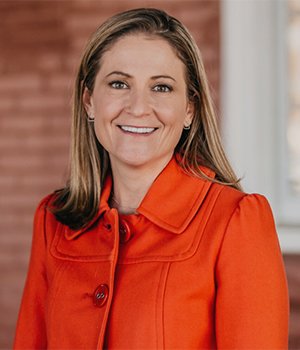
Laura Ullrich: I would argue that economics can explain just about anything, because it explains how people and firms and organizations — which could also be a church — make decisions in the presence of scarcity. Scarcity of resources, scarcity of time.
How are people making their decisions [about] where they attend church, whether they attend church, how often they attend church? When they’re making decisions about how to allocate their time, that’s economics.
Another issue is the racial wealth gap. I personally think this is an important topic for everybody to understand — that some of the structural foundations of the economy since the founding of the United States prevent some families from growing the same kind of wealth that other families have.
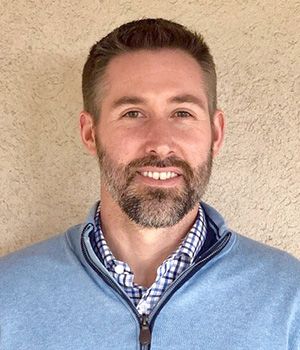
David Brown: I would add to that, I think that theology can be a lens through which a lot of how we experience things can be understood.
The sort of economics that Laura deals in from day to day is built on that idea of scarce resources. From a Christian point of view, we worship and follow a Jesus who was inaugurated in a kingdom where the bottom line was abundance.
It’s not an economy, perhaps, that we will experience on this planet. But our calling as Christians is to move our lived experience in this world toward that ideal.
That interplay between the scarcity that we actually experience in our economy versus this vision of what human flourishing might be — I think that’s the tension in which we live as followers of Jesus.
F&L: How can pastors or congregants or Christian individuals use this information?
DB: I would say that for those of us who are Christians, and Christian leaders, it’s a spiritual crisis as well. How do we respond faithfully to the volatility that’s going on around us?
What do we actually learn from in times of volatility? Can we sense new directions of God’s spirit that are moving us into new ways of being through disruptions? Are disruptions actually a learning opportunity for us?
Moving into the future, all leaders are going to have to intentionally increase their capacity to deal with change, uncertainty, volatility.
I think the other way to come at it is through the best of our tradition and heritage and history. How can we not be paying attention to economics and the situation in which our neighbors are living?
I think Jesus talks more about money than just about anything. The law and the prophets really talk about how we order society to lead toward human flourishing.
Our goal, our telos, our end goal in Christian leadership, what sets us apart from other types of firms or businesses or other types of leaders, is that we’re framed by the beginning and the ending of the biblical story.
We’re framed by the goodness of God’s creation in the beginning, and we’re framed by the re-creation we believe is in process and will come to completion one day.
F&L: What would you like people to understand about economics?
LU: I think that leaders of churches have a responsibility to try to make people aware of what the world looks like outside the walls of their particular churches, because even on the same street, it can be very different. And data can help with that.
A big part of my job is educating people about what’s actually going on. It’s really easy to get tunnel vision. If you live in a community with people, including in your church life, that look very much like you, have income levels that are about where yours are, you really can be in a place where you do not realize what the data actually show.
Has the wage gap between men and women or Black individuals and white individuals narrowed? Yes. But what are the data around what’s actually going on in terms of wealth?
The most recent data show that Black families are 20 times more likely to have zero or negative wealth than they are to have a million dollars in assets. That comes from the Institute for Policy Studies.
So a church that relies on white membership might have a pretty constant stream of money from people leaving money to them in their wills and things like that. They’re also getting regular large gifts from people as they start giving away assets as they get older.
A church with predominantly Black membership may struggle from a financial point of view in a way that’s likely different from a white church simply because of that statistic.
On the behavioral economics side, there are things that leaders within churches can do to encourage tithing or increase tithing. There are ways that they can practically impact the financial viability of their churches by thinking through how people make decisions.
What engages people at a deeper level than they might be giving otherwise?
So I think there’s a practical side of it, too, just from actually funding your organization. I’m sure it’s something pastors don’t feel as comfortable talking about, but it’s a very important part of running a church.
DB: I think No. 1 is the ability to look up from trying to preserve our institution and to see what God is up to in the world around us. And to believe that the Spirit is already at work, that God is already on a mission in the world outside the institutions of our churches.
Listening, asking questions, really assuming that we have something we can learn from our neighbors who are similar to us in some ways and different from us in other ways.
Take an asset-based approach to our neighborhoods, and to our ministry alongside our neighbors. Instead of focusing on problems we might solve — especially white, resourced churches — really look at what assets are in the neighborhoods around us. How can we invest out of our resources in those assets?
And when we share those things that we have with one another, and when we build on the assets that God’s planted in the community, that’s really where this vision of God’s kingdom begins to take root and bloom.
F&L: Does a policy focus make sense, or do you see other ways to effect change?
LU: Churches and all organizations have to be careful with policy, because you don’t want it to be overly political.
But there are certain policies that really aren’t political in nature. There are some policies where it’s pretty clear that if there were relatively small changes, it could have a big impact.
An example was the GI Bill. When the GI Bill was passed, years ago, on paper it looked like it was this amazing opportunity for all veterans.
But then when you actually dug in, there was a major push in the South, specifically, in Congress and the Senate, to get the GI Bill to be locally administered versus federally administered. And the impact of that ended up being pretty significant discrimination at the local level.
And so the reality was the GI Bill could help you buy a house as a veteran, but those opportunities were not equal across race and gender. Redlining was in place with banks, so you couldn’t get a mortgage in a lot of the predominantly minority neighborhoods. And in the South, many of the white neighborhoods had covenants that said minorities couldn’t live there.
So the practical application of this local policy, the fact that it was locally administered, resulted in some pretty significant discrimination.
So that’s an example of a policy where decisions that were made led to generational outcome differences. At the time, if people had been more aware of how these decisions were made, maybe something could have been different, right?
DB: There’s a good bit of variance across denominations in this area. There may be specific ways in which denominational structures either encourage or discourage that.
You can hardly read Scripture and not be called to act for, not just the common good, but the flourishing of all people. So I think our faith requires us to be political but not partisan.
I think there are two things that are helpful here. One of them is oriented toward the past; one of them is oriented toward the future.
Oriented toward the past, I think that particularly white Christians and churches who have been a part of the power system in the United States can acknowledge and repent. And repentance isn’t just something you say; it’s something you do.
And then the forward-looking piece: I’m teaching strategy, where the rubber hits the road for ministry. There’s this interplay between theology and economics and Christian practice.
One of the ways we define strategy in the class is “what we are doing in the present.” Everyone has a strategy; how well thought out, how intentional it is, is the question.
I think that to be more intentional about that would be to say, “Who is it that we are as churches? What are we called to do? What is God’s intention for us? And how are we living into that?”
I think that’s more than just, “How do we keep the lights on in the church building or pay down the mortgage or increase our budget?”
F&L: What is your advice for folks struggling with whether there is going to be a recession?
LU: There are a lot of people that were literally taught in school that the definition of recession is two quarters of negative GDP growth. That’s not true. There’s no true definition of a recession. However, because so many people believe that definition, that changes how they make decisions, right?
I think people are right to feel unsettled right now. We have the highest inflation we’ve had in 40-plus years. The last time inflation was this high, David and I were in preschool.
And for a large percentage of the population, this is truly causing them stress. It is difficult for them to maintain their lifestyle right now compared with how it was six months or a year ago. So the discomfort is understandable and real.
On the more positive side, for most of us, the only recessions we remember well are the COVID recession, which was a bizarre situation, and then the Great Recession, which is called the Great Recession because it was so significant.
A lot of people who are working today don’t remember the recession in 2001, or in 1992, 1993. They were recessions but were not as significant. So when a lot of people hear “recession,” they think of something more extreme than it might be in the end.
As of right now, employment remains very strong. We are adding an impressive number of jobs in the U.S. each month. Until that pattern changes, it is less likely that we will officially be in a recession.
F&L: David, what do you think church leaders should do in this period of uncertainty?
DB: Pastors and other church leaders have to intentionally cultivate a sense of hopeful realism.
As pastors, part of our calling is to be companions and shepherds of our congregations as we move through life together. You can’t do that with either a Pollyannaish sense of optimism or a sense of cynicism.
The place that I would start is with a core belief statement, that the God that we believe in is a God who has guided God’s people through all sorts of times of uncertainty and challenge. God invites us to be active participants in that story of ongoing redemption. God’s grace and love will sustain us no matter what.
Even in the midst of all that’s going on, and the real actual pain and uncertainty, God is still present in the lives of God’s people. And so we can find reasons for hope.
When we share those things that we have with one another, and when we build on the assets that God’s planted in the community, that’s really where this vision of God’s kingdom begins to take root and bloom.
The COVID-19 pandemic will surely have a long-term impact on the financial life of congregations, regardless of their denomination, size or makeup. How can churches survive and even thrive in a post-pandemic landscape?
Faith & Leadership asked 12 church and ministry leaders in a variety of contexts across the country to share their views of the future.
Contributors
Click a name to jump directly to that contributor’s response.
• David P. King
• Bill Wilson
• Prince Raney Rivers
• Laura Everett
• Reginald Blount
• J. Phillip Martin
• Gerardo Marti
• Elise Erikson Barrett
• Brian Kluth
• Josephine Everly
• Tim Wishon
• Mark Ramsey
They spoke about matters of dollars and cents — the need for online giving, for example. But they went beyond that, reflecting on the broader challenges and shifting roles facing churches on the other side of the pandemic.
No one knows the answers. But the question, as one participant put it, is clear: “Is this the death of the church or the rebirth?”
‘Making your case’
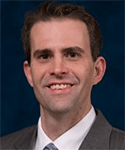 David P. King
David P. King
Karen Lake Buttrey Director
Lake Institute on Faith & Giving
Indianapolis, Indiana
The Lake Institute on Faith & Giving had been preaching about the importance of addressing money in theological terms long before the pandemic. Now more than ever, said institute director David King, churches that shy away from the subject do so at their own risk.
“The time for being humble and shy in making your case is over,” King said. “The time for talking about money as if it’s taboo in a congregation should also be over.”
The Lake Institute is part of the Indiana University Lilly Family School of Philanthropy at IUPUI. Its 2019 National Study of Congregations’ Economic Practices found that revenue growth was more prevalent among congregations that regularly discussed the theological importance of giving through sermons, money management classes and the like.
For example, 12% of the 1,200 congregations surveyed indicated that they addressed financial matters monthly. Of those churches, 73% reported increases in revenue.
It is crucial, King said, for churches to lift up online giving not just as a convenience but as a theologically sound way to give. The 2019 study (reflecting 2017 data) found that 46% of churches offered online giving — a number that likely has risen with the recent shutdown — but that 78% of revenue still came through worship.
Managing how people give, King said, isn’t as pivotal as articulating why their giving is a vital part of a life of faith. The pandemic just raised the stakes.
“On any day, but particularly today,” he said, “religious leaders avoid at their own peril the full lives of those entrusted to their care.”
‘Local churches can lead the way’
 Bill Wilson
Bill Wilson
Director
The Center for Healthy Churches
Clemmons, North Carolina
Bill Wilson predicts that up to one-third of U.S. churches could be out of business by 2025.
He points to LifeWay Research that says 5% of U.S. churches will close within the year because of the pandemic. That’s five times the average closure rate for churches, according to The Christian Century magazine.
Wilson, who directs The Center for Healthy Churches, acknowledges that this is all conjecture, given the unprecedented nature and unknown length of the pandemic shutdown.
His best guess is that churches will suffer a 33% decline in giving in 2020, in part because there was no live Easter offering. It’s possible that the traditional surge in giving in December will help make up for lost ground, he said, but there’s no way to know.
Drawing on his experience with his organization, which has worked with several hundred churches during the past decade, Wilson estimates that one-quarter to one-third of churches operate on thin or no reserves.
Yet despite evidence of a looming financial disaster, he remains hopeful that the church can rise to the occasion.
In a March 18 post on the center’s website, he wrote: “The Church has an opportunity to show the world what healthy people do in times of crisis. Rather than panic and devolve into self-absorption and self-protection, we run toward the needs in our culture rather than away from them. We refuse to demonize others, but act out the story of the Good Samaritan on a daily basis. Local churches can lead the way to show their communities what ‘love your neighbor as yourself’ actually looks like.”
Wilson believes that our response to the crisis will help determine what happens next. “Is this the death of the church or the rebirth?” he said. “We’ll see.”
‘What are we not doing?’
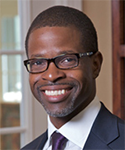 Prince Raney Rivers
Prince Raney Rivers
Senior pastor
Union Baptist Church
Durham, North Carolina
As pastor of a 5,000-member church and third vice president of the General Baptist State Convention of North Carolina, the Rev. Prince Rivers takes a short and long view of the shutdown.
In the short term, Rivers said, churches need to appreciate the importance of adopting online giving if they haven’t already, and convince members that it’s a viable alternative to the Sunday offering.
That may be a particularly hard sell in the African American faith community. According to the Lake Institute’s 2019 National Study of Congregations’ Economic Practices, African American congregations receive 88% of their revenue through worship services, compared with 78% for all congregations.
Rivers said that giving lagged at his church during the shutdown until they scheduled times for members to drive by and drop off their offerings. Many people do not feel comfortable giving online or even mailing their checks, he said. They want to practice the physical act of giving at the church.
Taking a longer view, Rivers believes that sheltering in place will stir churchgoers to more deeply affirm the value of worshipping shoulder to shoulder, “the significance of gathering people together and building relationships you can depend on,” he said.
As the shutdown forces churches to examine their ministries and programs in terms of cost, Rivers hopes it also inspires them to reexamine, in a more profound way, how best to serve Christ.
“What do we really need to bring back?” he said. “And what are we not doing that we need to put more energy in?”
After the pandemic, Rivers hopes congregations will take a broader view that looks beyond their own steeples. His prayer? As we have sheltered in place as one, may we return to everyday life as one, bound by our hopes and needs, regardless of gender, color, class and culture.
‘Terrified of what the church might be …’
 Laura Everett
Laura Everett
Executive director
Massachusetts Council of Churches
Boston, Massachusetts
Amid the current uncertainty, Laura Everett of the Massachusetts Council of Churches said she is certain only of her fear: “I am terrified of what the church might be on the other side of this. I am terrified that we will come out on the other side of this and there will only be wealthy churches.”
She calls the pandemic and its aftermath “apocalyptic,” revealing what she characterizes as “the great divide in the body of Christ.”
There are wealthy churches with strong financial reserves and the ability to survive even COVID-19, she said. Then there are smaller, struggling churches whose members now and in generations past have been held back by racial and economic injustice.
If the wealthy don’t reach out beyond their congregations, denominations and narrow self-interest to help the poor and vulnerable, she believes, these marginalized churches will suffer — or die.
Christians should understand that God’s economy is not the coronavirus economy, Everett said.
“We believe there is enough,” she said. And so the challenge is to share what we have with those who need it most — to live up to that yearning expressed in John 17:21, “that they may all be one.”
And if the church fails to do this?
“If we only take care of our own,” Everett said, “how can anybody trust us?”
‘How is it with your soul?’
 Reginald Blount
Reginald Blount
Assistant professor of formation, youth and culture
Garrett-Evangelical Theological Seminary
Evanston, Illinois
Reginald Blount says he is optimistic yet pragmatic about what the church might look like when it returns to a new normal.
He believes that virtual ministry will play a more powerful role, to the point that everything except Sunday worship will be conducted online.
He anticipates that churches will still be calming the fears of members 18 to 24 months from now, including those who will be dealing with post-traumatic stress disorder (PTSD). He hopes churches will expand their pastoral counseling and mental health outreach.
Noting that COVID-19 has hit black and brown communities especially hard, Blount wants churches to address personal health — exercise, hypertension and other challenges.
But he also wants them to address public health issues. Why do African American and Latino communities lack easy access to full-service grocery stores with ample fresh foods? Why don’t the poor have equal access to health care?
While on sabbatical this semester, Blount is studying the impact of current economic dynamics on African American churches, focusing on inequities in access to financial resources.
In addition to his academic work, Blount is senior pastor of the 150-member Arnett Chapel AME Church in Chicago. The challenge for his congregation and others, he said, is how to touch members without actually touching them.
Arnett Chapel AME is emphasizing FaceTime, phone calls and letter writing — not email, but old-fashioned pen to paper.
Blount is sending out a robocall to his congregants twice a week with a devotion or simple word of encouragement, “for the members to be able to hear their pastor’s voice,” he said.
His church hopes to revive the old Methodist tradition of class leaders — laity assigned to reach out to church members.
The question they will ask is the question we are all asking one another these days: “How is it with your soul?”
‘How long is our memory?’
 J. Phillip Martin
J. Phillip Martin
CEO
The Church Network
Richardson, Texas
When the pandemic hit, The Church Network offered its 1,500 congregations three pieces of advice:
- Take a deep breath.
- Communicate regularly to your church members about worship, giving, the status of ministries, meetings and more.
- Offer alternative ways to give.
This Texas-based interdenominational organization is made up largely of church administrators, so its focus during the pandemic has been on economic survival, said J. Phillip Martin, the network’s CEO.
Beyond that initial advice, Martin is urging congregations to launch or enhance online giving platforms.
One suggestion, from Discipleship Ministries of the United Methodist Church, is for churches to send out regular emails on Saturday evenings or Sunday mornings reminding those watching online — or not watching at all — to give, Martin said.
He hopes that church leaders now see the need to build up reserves for the next crisis that puts church life in peril. Should you have a month’s worth of money in the bank? A year’s worth? These questions can no longer be tabled for another day, Martin said.
He also encourages congregations to be open to innovation. Many churches have found ways during the pandemic to care for the homebound via Skype and Zoom. Congregations should continue to look for fresh ways to preach and live the gospel virtually — worship, pastoral care, education. Certainly, this approach will speak to youth and young adults, the two demographics the church is losing in greatest numbers.
Churches can go in one of two directions after the pandemic, Martin said. They can find ways to be more stable in administration and innovative in ministry, or they can ignore the lessons of the pandemic and go back to business as usual.
“The question,” he said, “is, How long is our memory?”
‘I could be wrong, right?’
 Gerardo Marti
Gerardo Marti
Professor and chair of sociology
Davidson College
Davidson, North Carolina
Gerardo Marti sees trouble ahead in the immediate days following the shutdown.
Churches with limited credit and fixed costs — mortgages, leases, maintenance — will have little room for financial flexibility. Marti foresees church attendance dropping when live worship returns, especially among occasional attendees.
With that, he anticipates a decline in giving. Ambitious plans, whether reflected in new ministries or in new or improved facilities, will have to be put on hold while churches worry about more immediate issues.
How much staff do we need and can we afford? How many chairs should we put out for worship?
With that narrow focus, innovation will likely grind to a halt, said Marti, who is co-author of the book “The Glass Church,” about the financial collapse of Robert H. Schuller’s megachurch, the Crystal Cathedral.
For example, a profound church innovation of the late 20th century was the start of contemporary worship. That sort of bold step, which draws newcomers and engages regulars, will give way after the crisis to a focus on returning to some level of normalcy, he said.
If any churches not only survive but perhaps prosper, Marti said, it may be the smaller Pentecostal and nondenominational evangelical congregations, those with fewer than 300 members. This size and style of church strikes a particularly strong chord in the Latino community, he said.
Their smaller size generally means they have less infrastructure, less fixed debt for capital projects, maintenance and the like, and are less dependent on a higher-up body for financial support. These congregations, already comfortable living on a shoestring, may be best positioned to continue their ministries with a fervor unaffected by COVID-19.
Given that all of this is uncharted territory for churches and the rest of society, Marti is quick to add a warning to his forecast: “I could be wrong, right?”
‘Unlock some different kinds of creativity’
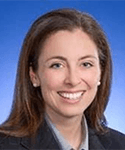 Elise Erikson Barrett
Elise Erikson Barrett
Coordination program director
National Initiative to Address Economic Challenges Facing Pastoral Leaders
Indianapolis, Indiana
Elise Erikson Barrett fears that COVID-19 will force already struggling churches to lock their doors five to 10 years earlier than they otherwise might have. But at the same time, she hopes that it will stir those churches to seize this unprecedented opportunity to embrace change.
Barrett directs a program to help pastoral leaders facing economic challenges. The initiative, funded by Lilly Endowment Inc., supports 43 grantee organizations, stewarding projects to equip pastoral leaders for financial literacy and leadership, as well as providing direct economic aid.
Many pastoral leaders engaged in the grant programs are men and women of color who lead small, rural congregations. Many struggle to meet payroll and keep the doors open.
When the shutdown is over, Barrett believes, there are at least two ways such churches can respond: offer a long, slow resistance to change, mired in the legitimate grief of losing the way church has always been, or rally around the need for dramatic change and identify what Barrett calls a church’s core purpose.
How might a church choose the latter? Become more focused on mission outside the church rather than difficulties within the church, Barrett said. Be willing to adapt, whether that involves the size and responsibilities of church staff, how the buildings and campus are used, or how the church can make itself invaluable to its neighbors.
Each church’s story — past, present and future — is different. But on the other side of sheltering in place, Barrett sees a blank canvas waiting for God’s people to bring it to life.
“This,” she said, “can unlock some different kinds of creativity.”
‘Many of our idols have fallen’
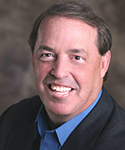 Brian Kluth
Brian Kluth
Director of NAE Financial Health
National Association of Evangelicals
Denver, Colorado
Brian Kluth, who lectures and writes about generosity and finances in churches, foresees four options for churches faced with a difficult decision after the pandemic:
- Merge with one or more other congregations.
- Become a satellite campus of a larger church.
- Transform into a house church, where remaining members meet in each other’s homes.
- Close and disband.
Even churches that survive will have to examine giving and make adjustments in payroll, facilities and programs, he predicts.
Drawing on 2015 research by the NAE Financial Health initiative, Kluth said it’s inevitable that many churches will face wrenching choices. The median annual church budget in the United States is $125,000.
Such churches, Kluth said, have little margin for a decline in giving, especially if they lack online giving and livestream capabilities.
Kluth is worked with a number of national organizations and ministries to conduct an online poll of church leaders to gauge the economic impact of the pandemic. The poll indicates that about six out of 10 churches have seen a drop in giving.
But rather than seeing the pandemic solely as a crisis, Kluth sees it also as an unexpected sabbatical season, free of distractions, with time for churches and their members to search their souls.
“Many of our idols have fallen in this season,” he said, citing sports, shopping and travel. “We have to reassess what our commitment is to God and to our families. It’s no longer about the big Sunday production but how we [show] care and love for people.”
In that sense, he said, the pandemic shutdown can be a gift from God.
‘A true digital stewardship’
 Josephine Everly
Josephine Everly
Chief development officer
Leadership Roundtable
Washington, D.C.
In her role with Leadership Roundtable, Josephine Everly helps U.S. Roman Catholic parishes, schools and missions with strategies for raising funds, building endowments and engaging donors.
And she has experience dealing with the aftermath of a crisis. Having grown up in New Orleans, she brought a personal passion to managing disaster-relief giving after Hurricane Katrina.
Everly believes that it will be 18 to 24 months before parishes, schools and other Catholic institutions see a return to normal levels of giving.
With so many parishioners facing possible layoffs and declining investments, it will likely take that long for many donors to recover from the pandemic, she said.
Everly anticipates closings and consolidations among Catholic institutions, especially in communities on the margins.
She knows of 13 U.S. Catholic parishes that launched online giving in the first week of the pandemic. But giving remotely is a tough sell for Catholics, she said, because the seven sacraments of the Roman Catholic Church, including Holy Communion, are shared within the four walls of the church.
The physical act of passing the plate at Mass, she said, is a deeply spiritual experience that cannot be replicated online. Nor can mailing a check provide the same experience.
Her counsel?
The church must expand digital giving but also expand how it shares the word of Christ online, offering the broader, deeper spiritual experience for which Catholics yearn — or at least the next best thing.
“A true digital stewardship,” she said, “does this.”
‘I gave online’
 Tim Wishon
Tim Wishon
Church administrator
Carmel Baptist Church
Matthews, North Carolina
Tim Wishon oversees the business side of a megachurch with the resources to survive the pandemic.
Carmel Baptist has 5,000 members, an average of 2,500 worshippers at Sunday’s three services and a $10 million annual budget — $23.6 million if you include its K-12 private school and preschool.
But the church has a challenge in common with smaller churches: convincing members that giving online can be as meaningful a part of their faith life as dropping a check or envelope in the offering plate.
The church has robust, cutting-edge technology, from online giving to the livestreaming by which Carmel has been reaching its congregation during the pandemic.
Carmel’s constituency is largely suburban, middle-aged and professional. Members are comfortable living their lives online.
And yet, Wishon reports, 50% of the church’s giving pre-quarantine was put in the plate on Sunday mornings. Another 35% was mailed in, and 15% came in online.
Passing the plate endures as a powerful, sacrificial act, he said, from farmers offering fruits and vegetables generations ago to children tithing part of their weekly allowance today.
Still, the pandemic may at least have introduced people to the ease of giving online. Post-quarantine, 45% of Carmel’s giving has been online, Wishon said. But 55% still comes the old-fashioned way — through a check in the mail.
For those who need a little help in the long term pivoting away from a tradition as sacred to them as a hymn, Wishon has a suggestion. When Sunday worship returns, churches can provide cards bearing a simple statement for members to put in the offering plate: “I gave online.”
‘A gut-check moment’
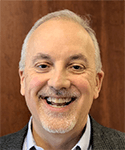 Mark Ramsey
Mark Ramsey
Executive director
The Ministry Collaborative/Macedonian Ministry Foundation
Atlanta, Georgia
The message of the church must be bigger than “We’ve reopened the doors, and the machine is up and running,” said Mark Ramsey, the head of a ministry that offers pastors a chance to meet with peers.
Yes, churches will have to become leaner organizations after the pandemic. And it’s not just small churches at risk, he believes. Larger churches with big buildings and big staff will face big financial challenges, too.
All churches will have to inspire people who have worshipped online for months to return to the church on Sunday mornings.
But if the church doesn’t seize the moment and examine the essence of its place in this world, do matters of finance matter?
“If the church feels like my homeowners association in how they do things and what they offer,” Ramsey said, “what’s the point?”
Lessons learned must go beyond how to livestream a funeral. People are frightened. Our way of life has been turned upside down. Now is the time for the church to reintroduce itself as a place of care, connection, community and depth, he said.
“God loves the church,” Ramsey said. “But God loves the world more. Do whatever you can to love the world now, and don’t worry about your infrastructure. If churches focus on the money, they’re going to have a hard time. If they focus on what they can do culturally, I think they’ll have a fighting chance.
“I think this is a gut-check moment,” Ramsey said. “Can churches really love into that?”
Additional Resources
Most houses of worship, denominations, seminaries and other faith-based institutions are sharing on their websites a broad offering of resources and reflections on COVID-19. Here are four that are featured in this article.
The Church Network: This national association focuses on church administration. Its COVID-19 presence offers church and government resources and articles.
Lake Institute’s National Study of Congregations’ Economic Practices: This 2019 survey of 1,200 congregations explores financial practices relevant to the current crisis.
Leadership Roundtable: This Roman Catholic organization offers leadership, pastoral and government resources for the COVID-19 crisis.
Massachusetts Council of Churches: This site has resources related to public health and doing the work of the church (funerals, finances, pastoral care and more) during the shutdown.